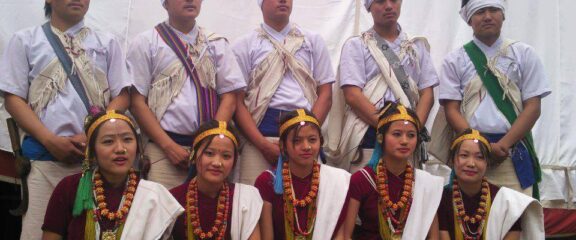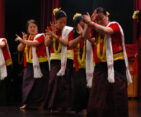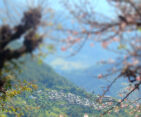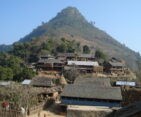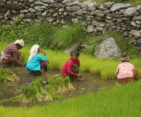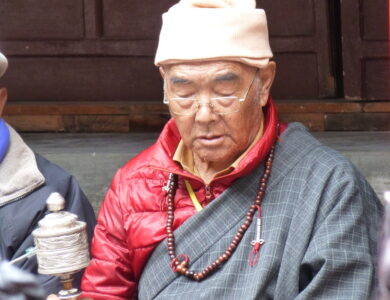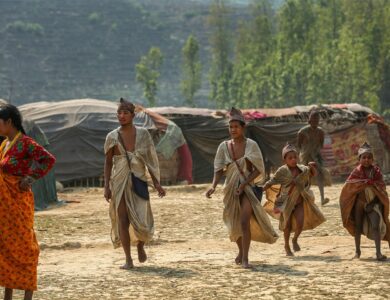Magar Ethnic Group Research Tour - Days
Easy
1-15 People
Kathmandu
All Year
- 3-Star Hotel in Kathmandu
- Magar Home Stay
- Personalized Transportation Services Tailored to Group Size
- Your safety, our no 1 priority
- Best price guarantee
- Experienced & dedicated team
- Easy booking, no hidden charge
- You can customize this trip
Highlights
- Immersive Cultural Experience: Engage with the Magar community, known for their rich cultural heritage and vibrant traditions.
- Traditional Villages: Visit picturesque Magar villages, where traditional houses and lifestyles offer a glimpse into the past.
- Folk Music and Dance: Enjoy traditional Magar music and dance performances, reflecting their unique cultural identity.
- Local Cuisine: Savor authentic Magar cuisine featuring local ingredients and traditional cooking methods.
- Handicrafts and Art: Explore the local craftsmanship, including intricate wood carvings, textiles, and handmade crafts.
- Nature and Scenery: Trek through the scenic landscapes of the Magar region, with lush forests, terraced fields, and stunning mountain views.
- Community Interaction: Participate in daily activities and learn about the Magar way of life, from agriculture to festivals.
- Historical Sites: Visit ancient temples and historical landmarks significant to the Magar culture.
- Wildlife and Flora: Experience the diverse flora and fauna of the region, with opportunities for bird watching and nature walks.
- Hospitality: Enjoy the warm hospitality of the Magar people, who are known for their friendliness and welcoming nature.
Trip Overview
The Magars, The largest ethnic group (around 8% of the total population), are Tibeto-Burmese people who live in many parts of the midlands zone of western and central Nepal. They are also farmers and tend to work the lower parts of the hills. Their settlements are found over the southern part of the Dhaulagiri Himalayan Range and Eastwards to the Gandaki River.
The Magars are also excellent soldiers and fought with Prithvi Narayan Shah to help unify Nepal. Their kingdom of Palpa (based at Tansen) was one of the last to be incorporated into unified Nepal. They make up the biggest number of Gurkhas under the Nepal British and Indian Military. The army salaries have greatly improved Magar’s living standards.
The Magars are very rich in their culture. They are simple but famous for their bravery and friendly hospitality. They are divided into seven different tribs: Ale, Buda, Gharti, Pun Magar, Rana, Roka, and Thapa Magars. The Magars generally live in two-story, rectangular, or square thatched houses washed in red clay. They have been heavily influenced by Hinduism and Buddhism. Bhangra and Bhoto for men and Lungi cholo for women are the traditional customs of Magars. Maruni, Kauda, and Salaijo dance of Magars are very famous in Nepal.
The Major area of Magar Settlements in Nepal
- Palpa District
- Myagdi District (Ghorepani Poon Hill Trekking Area)
- Baglung district
- Dhading District
- Gorkha District
Facts About the Magar Ethnic Group
Population: The Magar people are one of the largest ethnic groups in Nepal, with a population of over 1.8 million.
Language: They primarily speak Magar languages, which are part of the Tibeto-Burman language family, and many also speak Nepali.
History: The Magar people have a long history in Nepal, believed to have migrated from the Tibetan plateau centuries ago.
Religion: Traditionally, the Magar people practice a blend of Buddhism, Hinduism, and animism, with a deep respect for nature and ancestral spirits.
Military Service: Magars have a strong tradition of military service, with many serving in the Gurkha regiments of the British and Indian armies.
Agriculture: The Magar community is primarily agrarian, with terraced farming of crops like rice, maize, millet, and potatoes.
Festivals: Magars celebrate various festivals, including Maghe Sankranti, Buddha Jayanti, and Tihar, each with unique customs and rituals.
Clothing: Traditional Magar clothing includes colourful fabrics and distinctive headgear; the Man Wears Kachhad (wrap-on-loincloth), Bhangra, Bhoto (shirt or vest) and the usual Nepali Topi. Women wear the Phariya, lunghi, Chaubandhi Cholo (closed blouse), the heavy Patuka (waistband) and the Mujetro (shawl) on the head with jewellery.
Music and Dance: Magar folk music and dance are integral to their culture, with instruments like the Madal (drum) and traditional dances like Maruni and Sorathi.
Social Structure: Magar society is organized into clans, each with its own customs and traditions, maintaining a strong sense of community and identity.
Magar Ethnic Group Exploration Tour
For the Exploration and Research Trips, We customize every itinerary based on your travel plans and preferences. Normally we organize Magar Ethnic group exploration trips for about 7 to 20 days. It depends on you how long you want to spend and the purpose of the tour.
Please let us know how long you want to spend for Magar Ethnic Group Exploration Trip, Then we work with you until you’re completely satisfied that you’ve got an amazing trip planned!
How do we support you for the Magar Ethnic Group Exploration?
- To identify the best and suitable ethnic village of Magars as per your time, interest, and purpose of the tour
- To Arrange all necessary Paperwork and permits
- To provide professional and Experienced Guide and support staff
- To Arrange local expert who knows everything about the Magar Ethnic Group
- To Be the Local representative of your exploration tour
- To Arrange the best available accommodation in the exploration area
- To Arrange all the food and drinks during the exploration days
- To Arrange all the Transportation in Nepal
- To Arrange Flight Tickets, Charter flights, Helicopters, or the Rescue flight if needed
Build Your Own Adventure!
Collaborate with our specialists to create a unique itinerary.


